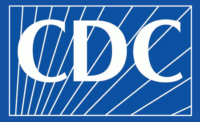Researchers Estimate Leafy Greens Foodborne Illness Outbreaks Cost U.S. $5 Billion Annually

Image credit: Antoni Shkraba via Pexels
A recent review authored by researchers from Ohio State University has established pathogen-specific foodborne illness burden estimates for leafy greens in the U.S. by combining three outbreak-based attribution models with illness incidence and economic cost models.
The researchers found that, annually in the U.S., leafy greens are responsible for up to 9.18 percent of all known foodborne illnesses caused by a pathogen, resulting in health-related costs of up to $5.278 billion. Excluding pathogens associated with small outbreaks, norovirus, non-O157 and O157:H7 Shiga toxin-producing Escherichia coli (STEC), Campylobacter, and nontyphoidal Salmonella are responsible for the greatest number of illnesses caused by contaminated leafy greens and the highest related costs.
Additionally, romaine, iceberg, and other lettuce were found to cause 60.8 percent of leafy green outbreaks, accounting for up to 75.7 percent of foodborne illnesses linked to the commodity, as well as 70 percent of costs. Out of all leafy greens subtypes, 19.8 percent of STEC O157:H7 illnesses are associated with romaine, according to the present estimates, resulting in approximately 12,496 cases of illness and costing $324.64 million in the U.S. annually.
The researchers underline the impact of modeling choices on attribution values, and therefore, estimates. For example, the modeling decision of whether to include outbreaks tied to single foods or complex foods is important. Limiting estimates to only outbreaks that involve singular foods or ingredients reduces false attributions, but underestimates risks from foods typically found as ingredients in complex foods. The three attribution models chosen for the study represent different approaches to this problem, basing estimates on simple food outbreaks, complex food and other ingredients, and complex foods considering compound probability distributions, respectively. Other modeling choices that varied across the models were whether to weigh outbreaks by number of illnesses and whether to discount or omit older outbreaks. Overall, no attribution model is “perfect” or universally accurate, stress the authors.
Looking for a reprint of this article?
From high-res PDFs to custom plaques, order your copy today!






